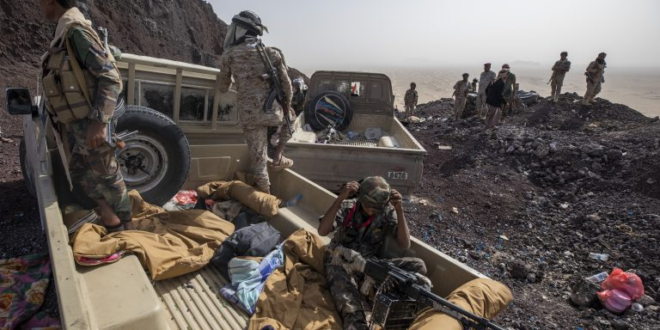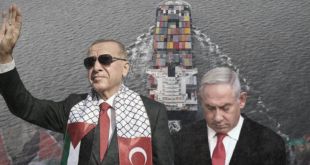Yemen’s long-running civil war between the internationally recognized Republic of Yemen Government and the Iran-backed Houthi movement diminished in 2022, but a permanent solution will likely remain elusive in 2023.
Two negotiating tracks – one led by U.N. mediators and a separate Oman-brokered Saudi Arabia-Houthi dialogue – have failed to produce meaningful breakthroughs.
Iran continues to arm its Houthi allies with missiles, armed drones, and small arms, should major active conflict ultimately resume.
Saudi Arabia and its key ally, the United Arab Emirates (UAE), seek an end to the conflict amid strains with Washington over their tactics in Yemen, widespread human rights abuses and burgeoning humanitarian crises, and energy production issues.
The civil conflict in Yemen is nearing its ninth year since the Iran-backed Houthi movement, energized by the 2011 Arab Spring uprising that toppled Yemen’s longtime strongman, President Ali Abdullah Saleh, moved out of its northern strongholds to capture Sanaa, the capital. The elected government fled into exile in Saudi Arabia, while continuing to control large parts of southern Yemen, from which they launched successive counteroffensives against Houthi forces, which Saudi Arabia and the United Arab Emirates (UAE) saw as strengthening Iran’s regional reach. They consequently intervened militarily in March 2015, believing they could quickly restore the nationwide writ of the Yemen government. Armed with rockets, missiles, and drones supplied by Tehran, the Houthis have more than held their own on the Yemen battlefield against the Yemen Government and its Gulf backers, who deploy U.S.-made advanced combat aircraft armed with precision-guided munitions as well as U.S.-made armor. By 2022, both sides were no closer to achieving their major objectives and U.N. mediators were finally able to broker a nationwide ceasefire that began on April 2, 2022.
The ceasefire provided the Gulf states with respite from Houthi missile and drone attacks, primarily on targets in the Kingdom, using Iran-supplied weaponry. The Houthis – and vulnerable Yemenis living in areas under their control – gained an easing of the Gulf state-led blockade on shipments of fuel and other supplies to the Houthi-controlled port of Hodeidah, as well as some limited passenger flight traffic out of Yemen from the Sanaa airport. However, the formal ceasefire was not extended in October 2022 over Houthi demands for a total lifting of the blockades, and an insistence that Yemen government revenues – which come mainly from oil sales – be used to pay the salaries of all civilian administrators in Yemen, including Houthis. Fighting has nonetheless remained well below that observed before the ceasefire. However, in late 2022 the Houthis conducted rocket attacks on Yemeni energy facilities to deny the Yemen government oil export revenue. As of early 2023, U.N. mediators are working to restore the ceasefire and evaluate the prospects for a permanent settlement to the conflict. In addition, the Sultanate of Oman has brokered a separate diplomatic track that many experts argue has long been pivotal to bringing peace to Yemen – direct talks between Houthi and Saudi and UAE government representatives. Both diplomatic tracks have failed to produce results, in part because the Saudis and Emiratis remain implacably imposed to providing financial support to Houthi members or their supporters. Yet, the parties are continuing the discussions in January 2023.
The prospects for an end to the Yemen conflict in 2023 appear uncertain: for all the warring parties, there are both incentives as well as drawbacks to a settlement. U.N., Omani, U.S., and other mediators who take an optimistic outlook point to several factors favoring a resolution of the conflict, despite the seemingly insurmountable demands of both sides. Global relief organizations maintain that a settlement is imperative considering the acute suffering of Yemen’s population, which, even before the latest war, was already the region’s poorest. For Saudi Arabia and the UAE, a settlement in Yemen would protect their territories from attacks by Houthi-launched, Iran-made systems and ease their tensions with the United States. Since 2017, members of the U.S. Congress, citing civilian casualties resulting from Gulf state air operations in Yemen, have succeeded in limiting some U.S. military support, such as aerial refueling, to the Saudi and Emirati militaries. In recent months, U.S.-Saudi tensions were compounded by Saudi support for cutting global oil production. As 2022 ended, U.S. President Joseph Biden sought to reaffirm the longstanding U.S.-Saudi strategic partnership by expanding joint defense planning against Iran and working against efforts by U.S. Senators to cut off not only weapons sales but also some intelligence cooperation with Riyadh. For the Houthis, a settlement would bestow global recognition and legitimacy on their movement and affirm their role as a major force in Yemeni governance and economic policymaking. Further, Houthi leaders recognize that their main backer, Iran, is coming under increased economic – and potentially military – pressure from the United States and its allies over its repressive policies and support for Russia against Ukraine. In early January, the U.S. Navy seized an Iranian shipment of 2,000 AK-47 rifles bound for the Houthis – the third such U.S. interception in the past two months – signaling U.S. intent to thwart that supply line. Reducing the weapons flow from Iran would deny the Houthis the battlefield advantages they have enjoyed thus far.
Yet, many factors and considerations that have prevented a settlement thus far still remain. The Houthis – perceiving that Saudi Arabia and the UAE want to exit the conflict more than they or Iran do – have set a price for a final peace that exceeds what Saudi Arabia, the UAE, and the Yemeni government are willing to pay. The Houthis demand a significant share of power in a restructured government, a full and permanent withdrawal of Saudi-led Arab coalition forces from the country, and equitable distribution of revenue from Yemen’s sale of oil. Accepting the Houthi conditions would represent a significant climbdown, particularly for Saudi Prime Minister, Crown Prince Mohammad bin Salman (MBS), potentially complicating his succession as King of Saudi Arabia and subjecting him to broad public and internal palace criticism. A settlement that gives the Houthis much of what they demand would institutionalize a foothold for Iranian influence inside Yemen, representing a clear failure by MBS and his Emirati partners to achieve the primary objective of their military intervention. Further complicating a settlement are the differences between the two Gulf partners over which pro-government factions should predominate in a new Yemen government: the UAE is insistent that Islamist factions linked to the Muslim Brotherhood be marginalized. A weighing of the pros and cons of a final settlement suggests that the battlefield in Yemen will simmer, although perhaps not erupt, in 2023.
 Eurasia Press & News
Eurasia Press & News




